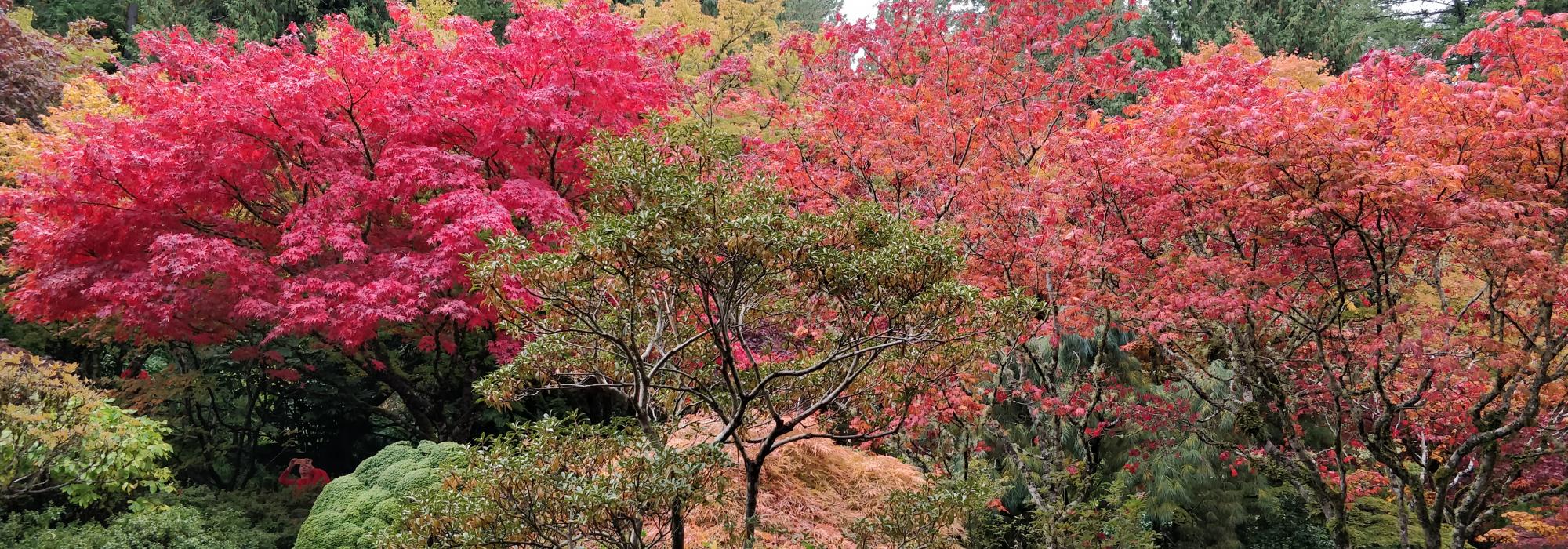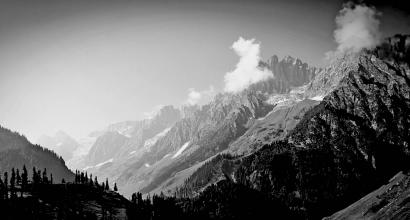The Story of Gomukha
When the enemies flung me in different directions, a certain divine woman picked me up and dropped me in a forest. I was greatly distressed and readied myself to jump off a ravine. However, a tapasvin stopped me, took me to his āśrama which was called Śivakṣetra. He heard my story and narrated about himself.
The Story of Nāgasvāmin
I hail from Kuṇḍinapura; my name is Nāgasvāmin; after my father’s death I went to Pāṭalīputra and found a teacher by name Jayadatta; I began my studies with him but I was unable to make much progress; my classmates teased me for it and so I left for Vindhyavāsini. On the way, I came by a town named Vakrolaka. As I was begging for bhikṣā [food, alms] there, a lady offered a red lotus along with the bhikṣā. When I proceeded to the next house, the lady of the house said, “Alas! That yoginī has got you under her spell! See, she has put a human hand in your bhikṣā!” When I examined it carefully, what appeared to be a red lotus was actually a human hand. I exclaimed, “O Mother! How do I survive this?” She said, “At a distance of three yojanas from here, there lies a village by name Karabhaka; there lives a brāhmaṇa by name Devarakṣita and in his house there is a Kapilā cow, which is akin to the divine Kāmadhenu. That will protect you tonight!” Accordingly I went there and took refuge under that Kapilā. That night, when the yoginī came with her friends to savour my flesh and blood, that divine cow hid me between its hooves and battled with the yoginī all night, protecting me from harm. Once it was morning, the cow said, “Child! I cannot protect you tonight; at a distance of five yojanas from here, in a forest, there lives a pāśupata [devotee of Paśupati, i.e. Śiva] by name Bhūtaśiva. Take refuge in him and he shall protect you.” So he hid me in his house and stood guard at the door holding a triśūla [trident]; when the yoginī came there, he drove her away. The following morning he told me, “Sir! I cannot protect you today; at a distance of ten yojanas from here, in the village of Sandhyāvāsa lives a brāhmaṇa by name Vasumati; if he protects you on this third night, then you will be free [from the clutches of the yoginī].” However, I was unable to cover that distance by foot before nightfall. The yoginī captured me even as the sun set. As the yoginī was carrying me with her, another gang of yoginīs appeared on the scene and a fierce battle ensued. In the pandemonium, I fell to the ground and escaped. I found a large mansion nearby and went to the door, which had been left wide open. I entered and found a woman who possessed matchless beauty. She welcomed me and uttered words of solace. Then she said, “I am a yakṣiṇī by name Sumitrā; I have become like this owing to a śāpa [curse]; if I have to be freed from the curse, I must get married to a man and spend a night with him. Therefore, enter without any fear.” She offered him food and clothes. He spent the night with her and she was freed from her curse. She left the place saying, “O brāhmaṇa! I am departing; you will be endowed with divine knowledge! You will become a great tapasvin and a siddha-puruṣa! You will be free from fear! Stay in this house of mine; but never ever go into the central chamber!” Smitten by curiosity, I went straight to the central chamber and found a horse there. When I went near the horse, it kicked me and I fell at the śivālaya! I have been here ever since. I have knowledge of the past, present, and future. You will soon meet your master!—thus he said. I was with him for all these days; today in my dream, Śiva appeared and blessed me saying my desires will be fulfilled; some divine woman brought me here; this is my story– he said. The Marubhūti narrated his story:--
The Story of Marubhūti
I, who was thrown by Mānasavega, was caught midair by some divine woman and she placed me in the forest. I was extremely sad and was about to kill myself, I noticed the āśrama near the lake. I entered inside to see a tapasvin with matted locks. He listened to my story patiently and said, “Don’t kill yourself; you’ll get to know the whereabouts of your master in due course; then you can do whatever you want.” After some days passed by, I saw a few divine women who came to the lake to bathe. The tapasvin instructed me, “Get the clothes of one of them; you’ll get the information which you require.”, I did so. The concerned woman came running, covering her breasts with her hands. The tapasvin said, “Tell us the whereabouts of Naravāhanadatta and you’ll get your clothes back!” She said, “Naravāhanadatta is currently in Kailāsa, he is performing tapas to propitiate Śiva; he will become the emperor of vidyādharas in the near future!” After she gave such important information, due to a curse, she became the wife of the tapasvin. They lived together and she became pregnant and delivered a child. Then she said to the tapasvin, “My curse has ended. If you want to reunite with me, cook this child with rice and eat it!” He did so and he flew away. I ate two of the remaining grains, this had an unusual effect, when I spat, I spat gold. Then I set out to reach you, and found myself in the company of a courtesan, the bawd there in her greed, tricked me to consume an emetic and made me vomit. The two grains came out, which she immediately consumed. I lost the power of spitting gold. Then in regret I went to the abode of Caṇḍikā and performed tapas for three days without consuming food in a bid to reach you. The Mother appeared and said, “Your master has achieved his target; go see him!” As the dawn approached some divine woman picked me and dropped me here.–this is my story.
The Story of Hariśikha
Then Hariśikha said, “After being thrown by the enemy (Mānasavega) I was swiftly rescued by some divine woman and I was dropped in Ujjayinī; I decided to kill myself, went to the crematorium, prepared a pyre and was about to burn myself, the Bhūtarāja there stopped me and said affectionately, ‘Why burn yourself? Your king is alive; he has achieved his aim; you’ll find him!’ If fate decides, even stones melt! Then I performed tapas, and some divine woman picked me up and dropped me here.” Likewise everyone narrated their stories. Then on an auspicious day Naravāhanadatta took the vidyādhara army and marched on Govindakūṭa, the capital of Gaurī-muṇḍana. In the battle, he severed Mānasavega’s head and pulverised Gaurī-muṇḍana by smashing him upon a boulder. The armies of his foes fled the battlefield. Next morning, he sent Vegavatī and Prabhāvatī to Mānasavega’s palace and had Madana-mañcukā brought to him.
As he continued to stay there, one day, two vidyādharas came to him with this message: “In accordance with Dhanavatī’s instructions, we had gone to Uttaravedi. We found out that Mandaradeva is all set to wage war on you”. Upon hearing this, Naravāhanadatta rallied his forces immediately and they were soon on their way. As they travelled, they broke their journey at the city ruled by Vāyupatha. There Vāyupatha gave his sister Vāyuvega-yaśā in marriage to Naravāhanadatta. However, she was quite averse to this marriage. So she cried “Even though I was against it, my brother is getting me married off! O protecting deities of this world, you are my witnesses! There is no mistake of mine in this!”. After a while, Gomukha came in and addressed Naravāhanadatta: “Lord! Four vidyādharīs are about to take their own lives by entering fire. They claim that their vow has been broken due to the actions of Vāyuvega-yaśā!”. Naravāhanadatta immediately rushed along with everyone assembled there. When they reached there, Vāyuvega-yaśā addressed Naravāhanadatta in front of the four vidyādharīs: “Lord! These four maidens are friends of mine. They are Kālikā, Vidyut-puñjā, Mataṅginī and Padmaprabhā. Having seen you in Siddhakṣetra, all five of us had vowed in our hearts to marry you together. If one of us were to marry you alone, the rest of us would jump into fire - this was our oath. Since our marriage would have broken this vow, I had said that I did not want to marry you! Dear husband, I beseech you to now marry all these four friends of mine”. Naravāhanadatta agreed and the girls’ parents happily came forward and married them off to him. As he continued to enjoy his stay in that city with his new wives, one day, his commander in chief Harishikha came and gently chided him saying: “Lord! What are you doing? You are transgressing boundaries of propriety despite knowing everything! Does it behove of you to engage in marital celebrations whilst we are at war? We had set out to subdue Mandaradeva. And yet, here you are, frolicking in the queens’ chambers”. To this, Naravāhanadatta replied “What you said is right. However, the reason I married them was not pleasure. It was in order to gain allies. It is a key instrument which can be brought to bear to subjugate one’s enemies! Now the time has come when the army can start its journey!”. Then Naravāhanadatta’s father-in-law Mandara - the father of Mataṅginī, said: “Lord! The place where Mandaradeva lives is very far and hard to reach. He is hiding in a cave called Triśīrṣa. At its mouth stands guard, a great warrior called Devamāya. Only an emperor who has attained lordship over all great jewels can enter the cave! The emperor of all fine jewels - the sandalwood tree is right here. You must first win it over!”. Following Mandara’s words, that very night, Naravāhanadatta fasted and then paid a visit to the shrine of the sandalwood tree. As he bowed down to it, an invisible voice rang out: “Dear Naravāhanadatta! I am pleased with you. I will be with you whenever you remember me. Go forth to Govinda-kūṭa. There you will acquire other jewels too. You can then easily conquer Mandaradeva”. Naravāhanadatta paid obeisance to the holy tree and returned to his camp. Next morning, seated in the divine aircraft accompanied with everyone, he departed for mount Govinda-kūṭa.
Here ends pañca-laṃbaka
The current article is a translation of Prof. A R Krishnasastri’s Kannada classic Kathāmṛta along with additional segments added from the original Kathā-sarit-sāgara (of Soma-deva). Bṛhat-kathā-mañjarī (of Kṣemendra) and Bṛhat-kathā-śloka-saṃgraha (of Budha-svāmin) have also been referred to. The translation has been rendered by Raghavendra G S, Arjun Bharadwaj, Srishan Thirumalai, and Hari Ravikumar.
The original Kannada version of Kathāmṛta is available for free online reading. So are the other works of Prof. Krishna Shastri










































